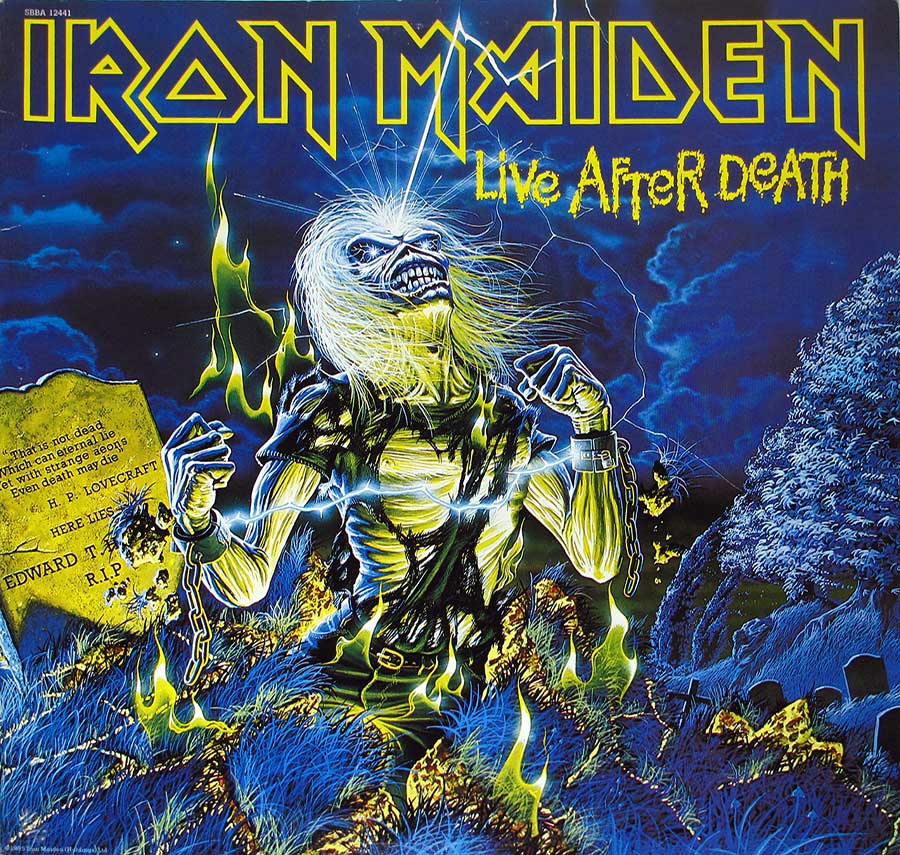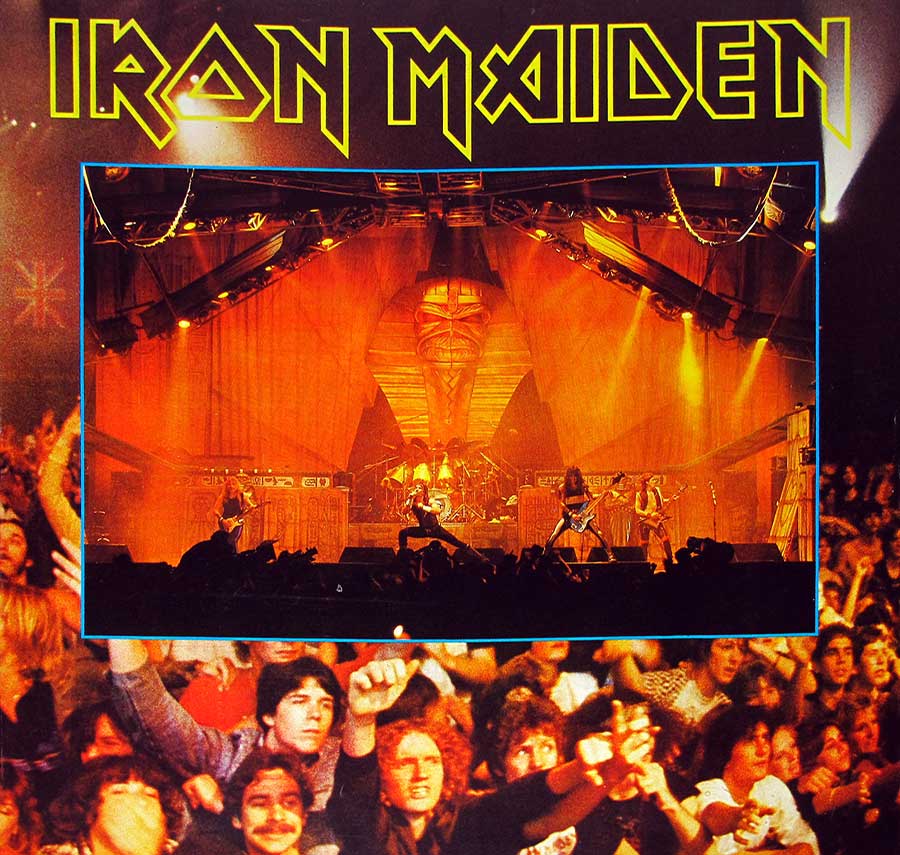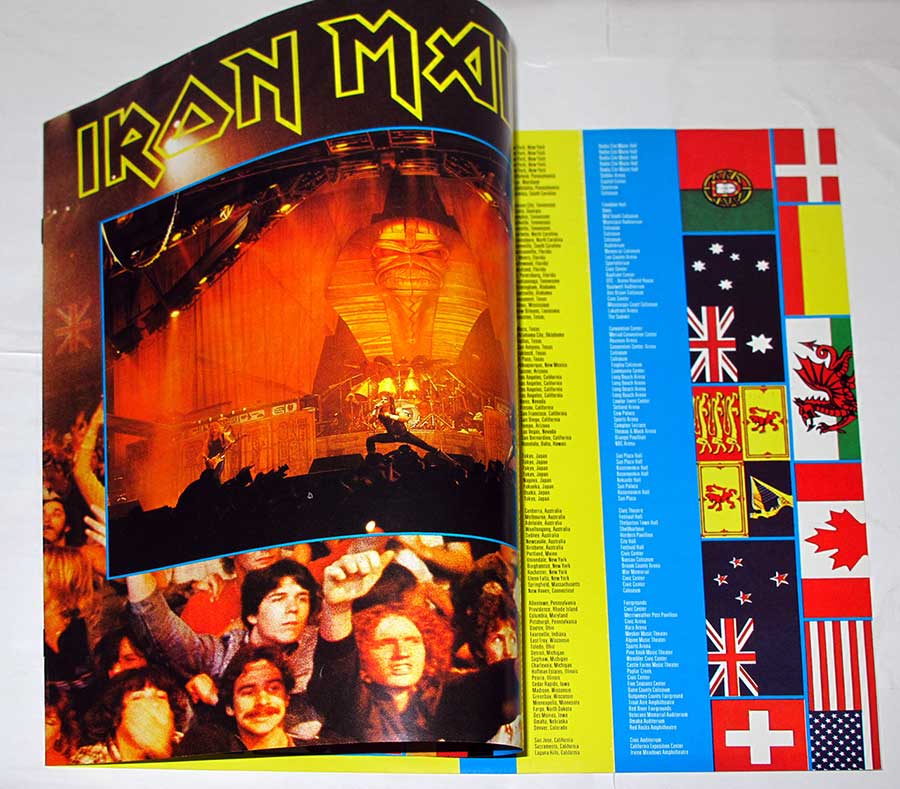"Live After Death" (1985) Album Description:
Lead / Overall Summary
“Live After Death” isn’t just a souvenir from the road — it’s Iron Maiden freezing a lightning bolt in vinyl form. Recorded at the height of the World Slavery Tour, it captures a band running at full throttle, pushing heavy metal into stadium territory without losing an ounce of grit. Even now, dropping the needle feels like stepping into a time machine lined with sweat, denim, and too-much-fog-machine.
Historical & Cultural Context
Mid-80s metal was a glorious mess: glam on MTV, thrash breaking out of garages, and the old guard refusing to slow down. Maiden sat somewhere above the chaos, riding an impossible wave of ambition that fused theatrical staging with razor-sharp musicianship. This album arrived right when the genre was exploding globally, and it proved that metal could be both larger-than-life and brutally human.
How the Band Came to Record It
After months of punishing travel on the World Slavery Tour, the band decided to bottle the insanity. They set up at Long Beach Arena — a venue they practically turned into a second home — and later at Hammersmith Odeon for the UK shows. Producer Martin Birch followed them like a sixth band member, capturing the chaos without sanding off the rough edges. The goal was simple: document what their fans were living night after night.
The Sound, Songs & Musical Direction
The album roars with a mix of precision and danger, the kind of energy you only hear when a band is teetering between exhaustion and transcendence. Bruce Dickinson sounds utterly possessed, the twin-guitar lines weave like duelling serpents, and Steve Harris drives everything forward with his trademark gallop. Long epics like “Rime of the Ancient Mariner” hit with cinematic force, while crowd-pleasers like “The Trooper” feel even rowdier than their studio counterparts.
Comparison to Albums of the Same Era
While 1984–85 gave us live albums from Scorpions, Priest, and plenty of arena rockers, none delivered this level of sheer theatre. “Live After Death” sits somewhere between a battlefield report and an opera. Compared to Metallica’s raw bootleg-like live tapes or AC/DC’s straight-ahead stomp, Maiden brought a sense of scale — a metal blockbuster before the term even existed.
Controversies & Public Reactions
Some critics claimed the sound was “too perfect,” accusing the band of cleaning things up in the mix. Others insisted it was too raw and chaotic. That’s metal fandom for you — two camps arguing from opposite cliffs while the rest of us just blasted “Aces High” until the walls shook. The artwork also stirred debate, because of course Eddie crawling out of a graveyard always does.
Band Dynamics & Creative Tensions
Behind the scenes, the tour had battered them. Months of travel, punishing setlists, and almost theatrical production demands pushed everyone to their limits. But the strain also forged a strange kind of chemistry — you hear a band leaning on instinct, running on fumes, yet performing with supernatural precision. This wasn’t a laid-back live record; it was five men proving they could survive their own ambition.
Critical Reception & Legacy
Upon release, fans devoured the album — especially the U.S. edition with its hefty booklet of color photos. Critics eventually came around, praising its scope and unapologetically epic sound. Four decades later, it remains the standard by which metal live albums are judged. Even listeners who weren’t born in ’85 treat it like scripture.
Closing Reflection
Spinning “Live After Death” today is like opening a sealed jar of vintage stage air: scorched amps, screaming crowds, and the warm hum of a band at the height of its powers. It’s loud, it’s grand, it’s excessive — exactly what heavy metal was meant to be. And somewhere under all that noise, you can still feel the heartbeat of five tired musicians who refused to take a night off.






